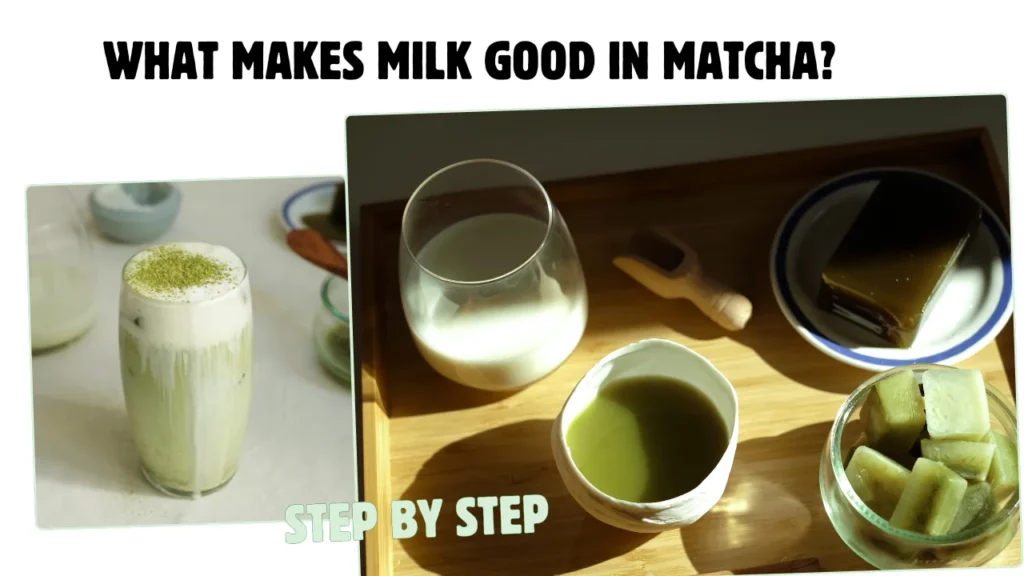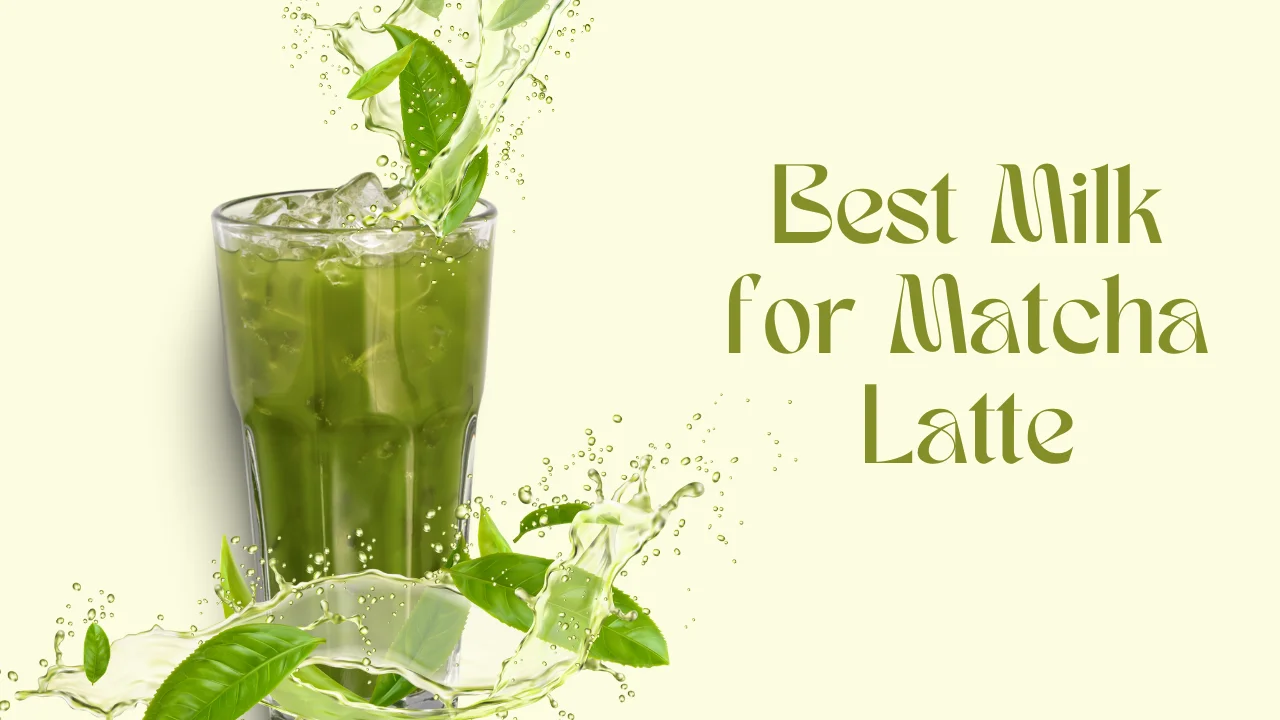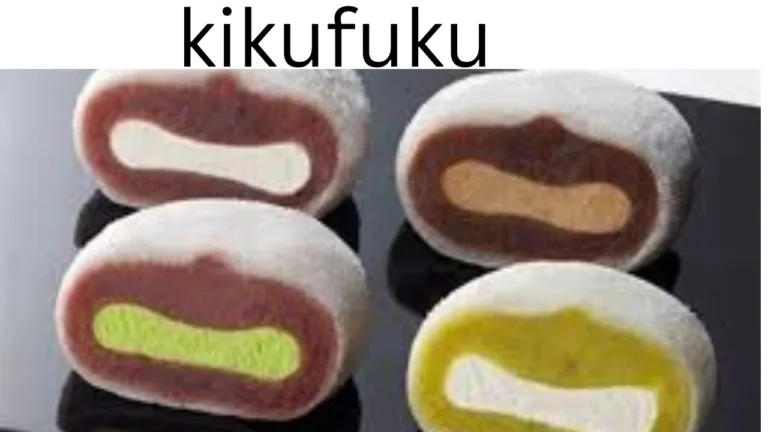Best Milk for Matcha Latte Guide to Perfectly Creamy and Balanced Flavors
Matcha lattes have surged in popularity, blending the rich, earthy flavors of matcha with the creamy texture of milk. This iconic drink, originating from traditional Japanese tea culture, has found a place in cafes and kitchens worldwide due to its unique taste and health benefits. Choosing the best milk for a matcha latte is essential to achieve the perfect balance of taste and texture. The milk not only affects the creaminess and froth but also plays a key role in enhancing or diminishing the flavor profile of matcha. Whether you prefer a dairy or non-dairy option, your choice of milk can elevate the experience, making it smoother, richer, or more tailored to dietary needs. This guide explores various milk options, both dairy and non-dairy, and offers tips for creating a matcha latte that satisfies your palate and complements the tea’s delicate, earthy notes.
Why Milk Choice Matters for a Matcha Latte
The milk you choose can significantly influence the overall taste, texture, and enjoyment of your matcha latte. Matcha has a delicate balance of flavors, combining earthy, umami notes with a slight bitterness and subtle sweetness. The right milk enhances these flavors, creating a creamy and harmonious beverage. However, the wrong milk can overpower matcha’s nuances or fail to provide the desired richness and froth. Milk also plays a role in the texture of the latte, adding body and smoothness. Selecting the best milk for a matcha latte ensures a drink that is both flavorful and satisfying.
Also Read: Psychology of an Alpha Submissive Understanding Dual Nature

What makes milk good in Matcha?
Milk is a key component of a matcha latte, and what makes it “good” lies in its ability to complement and enhance the flavor and texture of matcha. Here’s what to consider:
- Creaminess and Texture: Good milk adds a creamy, smooth texture to the latte, balancing the earthiness of matcha. Whole milk and plant-based options like oat or coconut milk are particularly creamy, creating a luxurious feel.
- Flavor Balance: The milk should enhance matcha’s natural flavors—earthy, grassy, and slightly sweet—without overpowering them. Subtly sweet milks like almond or oat milk work well for this purpose.
- Frothing Capability: For a velvety latte with foam, the milk should froth easily. Dairy milk froths well due to its protein content, while some plant-based milks like oat and soy are designed to mimic this ability.
- Temperature Stability: Milk should heat well without curdling or separating, which is especially important for non-dairy options like soy or coconut milk.
- Dietary Compatibility: A good milk choice aligns with dietary preferences or restrictions. For vegans or lactose-intolerant individuals, plant-based options like almond, oat, or soy milk are ideal alternatives.
Also Read: Alexandra Hollywood From Culinary Passion to Personal Resilience
Understanding Matcha and Its Flavor Profile
Best Milk for Matcha Latte is a finely ground powder made from specially grown and processed green tea leaves. It boasts a unique flavor profile characterized by a rich, earthy taste with subtle sweetness and a hint of bitterness. The choice of milk can either complement or overpower these delicate flavors, making it crucial to select the best milk for a matcha latte.
Dairy Milk Options
Dairy milk has been a traditional choice for lattes, including matcha lattes. The fat content in dairy milk contributes to a creamy texture and enhances the overall flavor.
- Whole Milk: With its high-fat content, whole milk provides a rich and creamy texture that complements the earthy notes of matcha. It also froths well, making it ideal for latte art. However, some may find that whole milk’s richness can slightly overpower the delicate flavor of matcha.
- Skim Milk: Skim milk offers a lighter alternative with less fat, resulting in a thinner texture. While it allows the matcha flavor to shine through, it doesn’t froth as well as whole milk, which may affect the overall mouthfeel of the latte.
- 2% Milk: This option strikes a balance between whole and skim milk, providing moderate creaminess without being overly rich. It froths reasonably well and allows the matcha flavor to remain prominent.
Non-Dairy Milk Alternatives
For those seeking plant-based options or who are lactose intolerant, non-dairy milks can be excellent choices. Each type offers unique flavors and textures that can enhance your matcha latte experience.
Also Read: Tsumo Omakase Ultimate Japanese Dining Experience in NYC
- Almond Milk: Almond milk has a velvety texture and a sweet, creamy flavor, making it one of the best choices for matcha lattes. It has a delicate and, most importantly, unobtrusive taste that goes well with matcha and lets its flavor and aroma shine.
- Oat Milk: Oat milk is a nut-free, plant-based milk with a subtly sweet, neutral taste, and creamy texture that allows the flavor of the matcha to shine through. It also froths nicely and doesn’t curdle when heated, which yields a creamy matcha latte for either a hot or iced beverage.
- Coconut Milk: Coconut milk is another nut-free, plant-based milk with a subtly sweet, coconut-forward taste, and creamy texture. Its coconut flavor pairs well with a stronger brewed matcha. For best results, use this milk substitute for iced lattes as it does curdle at higher temperatures.
- Soy Milk: Soy milk is a dairy alternative that’s nut-free with a slightly earthy and nutty taste. Some brands can have an overpowering beany taste, so experiment with different brands to see which one you like best. Soy milk froths nicely but will curdle at higher temperatures, so enjoy warm or iced.
Comparative Overview
To assist in selecting the best milk for a matcha latte, consider the following comparison:
| Milk Type | Creaminess | Frothing Ability | Flavor Profile | Dietary Considerations |
|---|---|---|---|---|
| Whole Milk | High | Excellent | Rich and creamy | Contains lactose |
| Skim Milk | Low | Moderate | Light and subtle | Contains lactose |
| Almond Milk | Moderate | Good | Nutty and slightly sweet | Nut allergy potential |
| Oat Milk | High | Excellent | Mild and sweet | Gluten sensitivity |
| Coconut Milk | High | Moderate | Coconut-forward | High in saturated fat |
| Soy Milk | Moderate | Good | Earthy and nutty | Soy allergy potential |
Tips for Crafting the Perfect Matcha Latte
- Quality of Matcha: Use ceremonial-grade matcha for the best flavor and vibrant color. Ceremonial-grade matcha is the highest grade and fit for tea ceremonies; it has the brightest green color and smoothest flavor.
- Temperature Control: Avoid using boiling water, as it can scorch the matcha and result in bitterness. Aim for water around 176°F (80°C).
- Sweeteners: If desired, add a sweetener like honey, maple syrup, or simple syrup to balance the matcha’s natural bitterness. The best way to sweeten a matcha latte is by using a liquid sweetener such as maple syrup or simple syrup (either infused or plain).
- Frothing Technique: Proper frothing enhances the texture of your latte. Use a milk frother or whisk to achieve a creamy consistency. Oat milk froths up the best of any of the non-dairy milk options, like almond milk and soy milk.
Conclusion
Selecting the best milk for a matcha latte is a personal journey that depends on individual taste preferences, dietary needs, and even the specific type of matcha used. The milk you choose not only affects the texture and flavor but also plays a role in how the Best Milk for Matcha Latte unique earthy and umami notes come through. Whether you opt for the rich creaminess of whole milk, the mild sweetness of oat milk, or the nutty undertones of almond milk, each option can create a distinct latte experience.
For a traditional approach, dairy milk offers a classic creaminess that highlights matcha’s smoothness, while plant-based alternatives cater to those seeking vegan or lactose-free options. Oat milk has become a favorite for its barista-friendly frothing capability, while coconut milk adds an exotic twist with its tropical flavor. Experimenting with different milks can lead you to discover not just your ideal matcha latte but also creative combinations that amplify the drink’s character.





